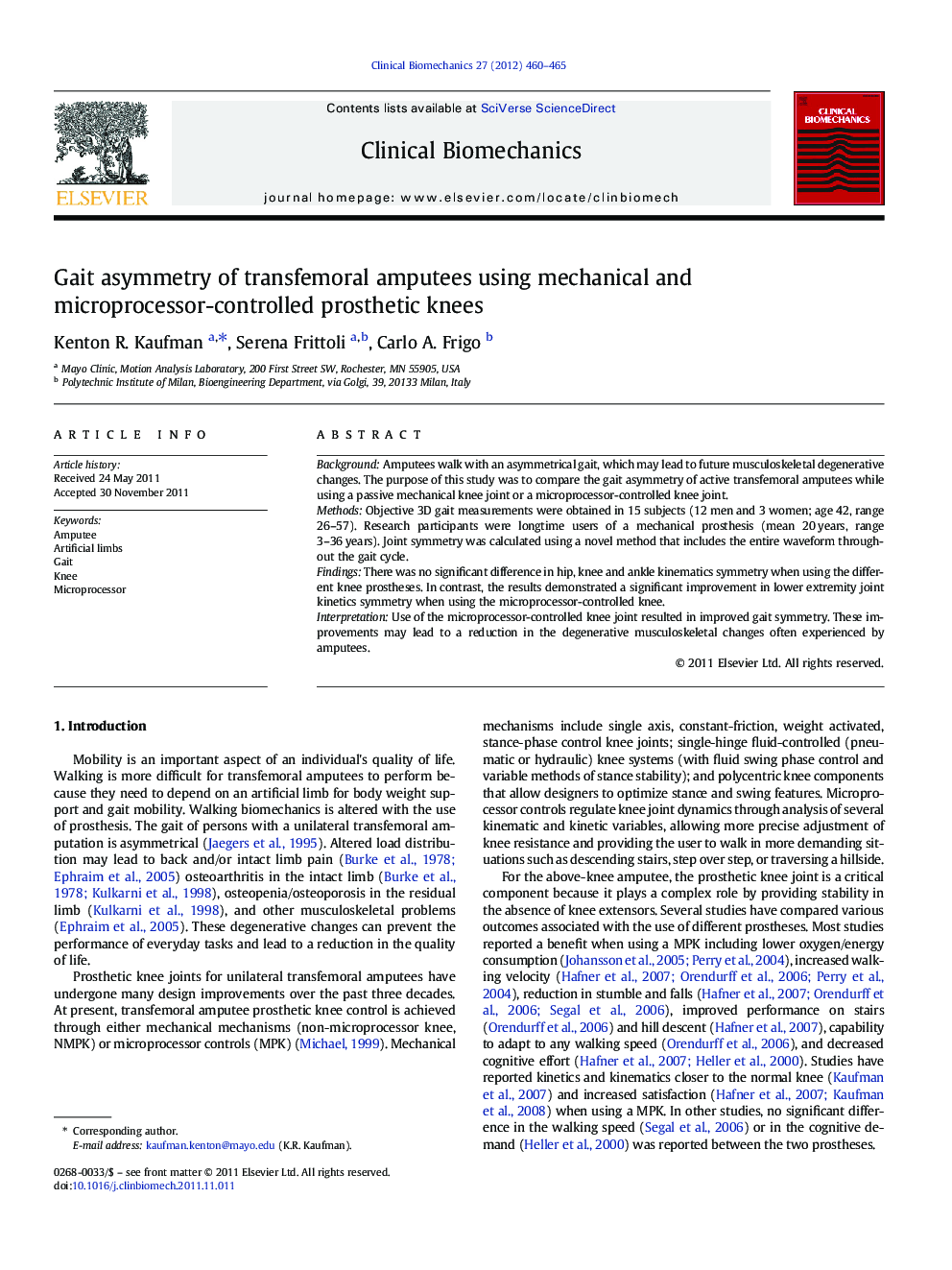| Article ID | Journal | Published Year | Pages | File Type |
|---|---|---|---|---|
| 4050517 | Clinical Biomechanics | 2012 | 6 Pages |
BackgroundAmputees walk with an asymmetrical gait, which may lead to future musculoskeletal degenerative changes. The purpose of this study was to compare the gait asymmetry of active transfemoral amputees while using a passive mechanical knee joint or a microprocessor-controlled knee joint.MethodsObjective 3D gait measurements were obtained in 15 subjects (12 men and 3 women; age 42, range 26–57). Research participants were longtime users of a mechanical prosthesis (mean 20 years, range 3–36 years). Joint symmetry was calculated using a novel method that includes the entire waveform throughout the gait cycle.FindingsThere was no significant difference in hip, knee and ankle kinematics symmetry when using the different knee prostheses. In contrast, the results demonstrated a significant improvement in lower extremity joint kinetics symmetry when using the microprocessor-controlled knee.InterpretationUse of the microprocessor-controlled knee joint resulted in improved gait symmetry. These improvements may lead to a reduction in the degenerative musculoskeletal changes often experienced by amputees.
